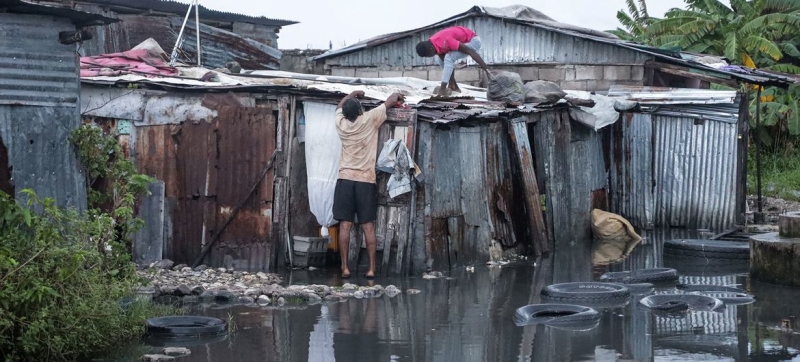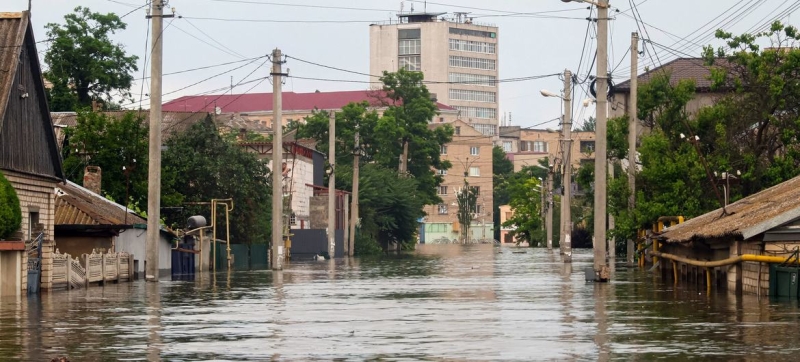
The aftermath of Hurricane Melissa in Haiti. The UN Security Council discussed the issue of environmental degradation in armed conflicts Peace and Security
The United Nations Security Council warned Thursday that war and climate change are together destroying ecosystems, displacing millions of people, leading to famine and threatening the return of stability, creating a vicious cycle of disaster and conflict.
At the meeting, convened at the initiative of Sierra Leone, which holds the Security Council presidency in November, UNEP Executive Director Inger Andersen, international law professor Charles Jalloh and World Relief humanitarian coordinator in Haiti Maranatha Dinat presented data on the scale of environmental destruction – from the Gaza Strip and Ukraine to the Caribbean – and called for urgent action to protect nature during conflicts.
Head of UNEP: conflicts destroy ecosystems and undermine security
Executive Director of the United Nations Environment Program (UNEP) Inger Andersen recalled that November 6 marks the International Day for the Prevention of Exploitation of the Environment during War and Armed Conflict, established by the General Assembly UN.
“Environmental damage during armed conflict destroys ecosystems and natural resources for decades to come and often extends beyond national boundaries and is not limited to a single generation,” she said.
Andersen emphasized that the environmental consequences of wars lead to hunger, disease and displacement of people. “Conflicts lead to environmental pollution, waste littering the land and destroying ecosystems, with long-term consequences for food and water security, the economy and human health,” she said.
In the Gaza Strip, 97 percent of cultivated trees, 95 percent of shrubs and 82 percent of annual crops have been destroyed since 2023, according to UNEP. In the past decade, there have been 180 incidents of deliberate attacks on water infrastructure in Libya, Syria and Yemen.

Flooded area of Kherson, Ukraine.
“The failure of Ukraine’s Kakhovka Dam resulted in the flooding of more than 600 square kilometers of territory, causing severe loss of natural habitats, vegetation and biodiversity due to long-term flooding of ecosystems,” Andersen added.
Climate change is also increasing tensions and, in some cases, contributing to conflicts, the UNEP chief said. Conflicts rarely have a single cause, but climate change is often a factor, she noted, quoting the UN Secretary-General: “Both climate disasters and conflict increase inequality, undermine livelihoods and force people to flee their homes.”
Andersen outlined three priorities for action: rebuilding national environmental management capacity, strengthening collaboration across sectors, and increasing investment in climate change adaptation in conflict-affected countries. According to her, such states receive only two dollars of climate finance per capita, while in states with a stable situation this figure reaches $162. Efforts are also needed to mitigate climate change.
“Every fraction of a degree of warming avoided means fewer losses for people and ecosystems – and more opportunities for peace and prosperity,” concluded Inger Andersen.
A common legal framework is needed to protect nature during war
Professor of international law and member of the UN International Law Commission Charles Jalloh noted that existing international legal protection of nature during conflicts remains a “mosaic of norms” rather than a coherent system. He recalled in particular the provisions of Additional Protocol I to the Geneva Conventions, which prohibit the use of methods of warfare that are likely to cause “widespread, long-term and serious damage to the natural environment.” conflicts.
“Significant efforts are being made to strengthen the international legal framework in the field of environmental protection,” the speaker noted.
He said that the International Law Commission in 2022 adopted 27 principles for the protection of the environment in connection with armed conflicts, covering periods before, during and after conflicts, including situations of occupation. One of them stipulates that states and international organizations participating in peacekeeping operations must consider the consequences of their actions on the environment and take measures to prevent and eliminate harm. Additionally, in 2020, the International Committee of the Red Cross updated its Guidelines for the Protection of the Natural Environment during Armed Conflict.
The Rapporteur proposed that the Security Council encourage the inclusion of these principles and guidelines in national legislation and military regulations. He also called for consideration of the possibility of recognizing ecocide as an international crime and creating a mechanism for monitoring environmental damage during conflicts, which could consider issues of compensation.

Destruction in Gaza.
“Given the ongoing conflicts mainly in Africa, Eastern Europe and the Middle East, which is where I would like to focus, we are witnessing not only a significant loss of human life, but also, according to UNEP, “an unprecedented level of environmental damage in the Gaza Strip, with damage to its soils, fresh water supplies and coastlines,” Jallo emphasized. abstraction, but the living space, well-being and health of people, including future generations,” Jalloh quoted the advisory opinion of the International Court of Justice from 1996.
In Haiti, nature and security are simultaneously under attack
Representative of the NGO World Relief Maranata Dinat spoke about the severe environmental and the humanitarian situation in Haiti, where nearly 98 percent of forest cover has disappeared, leading to soil erosion, loss of biodiversity and falling crop yields.
“Degradation is eroding the livelihoods of already vulnerable rural communities and increasing internal displacement, as well as exacerbating conflicts over natural resources, especially water and land,” she said.
Climate change is adding to these pressures, she said, with hurricanes, floods and droughts destroying infrastructure and exacerbating food and social insecurity. At the same time, armed violence, especially in Port-au-Prince, limits humanitarian access and forces people to seek refuge in unsafe areas.
“Imagine a mother living in one of the most vulnerable areas of the capital. Her house, already weakened by erosion, is flooded after heavy rains. She is forced to flee with her children, crossing gang-controlled areas and taking dangerous routes to reach a makeshift camp. This is the reality for thousands of Haitian families,” Dinat described the situation.
At the same time, young people are forced to leave poor rural areas only to find themselves in urban areas experiencing violence, unemployment and social exclusion.
Dinat emphasized that environmental, climate and Humanitarian crises are interconnected and require an integrated approach. All these factors – forced displacement, extreme climate conditions and armed violence – create a vicious circle from which it is difficult to escape. “The link between humanitarian assistance, climate adaptation and peacebuilding needs to be strengthened,” the speaker said.
